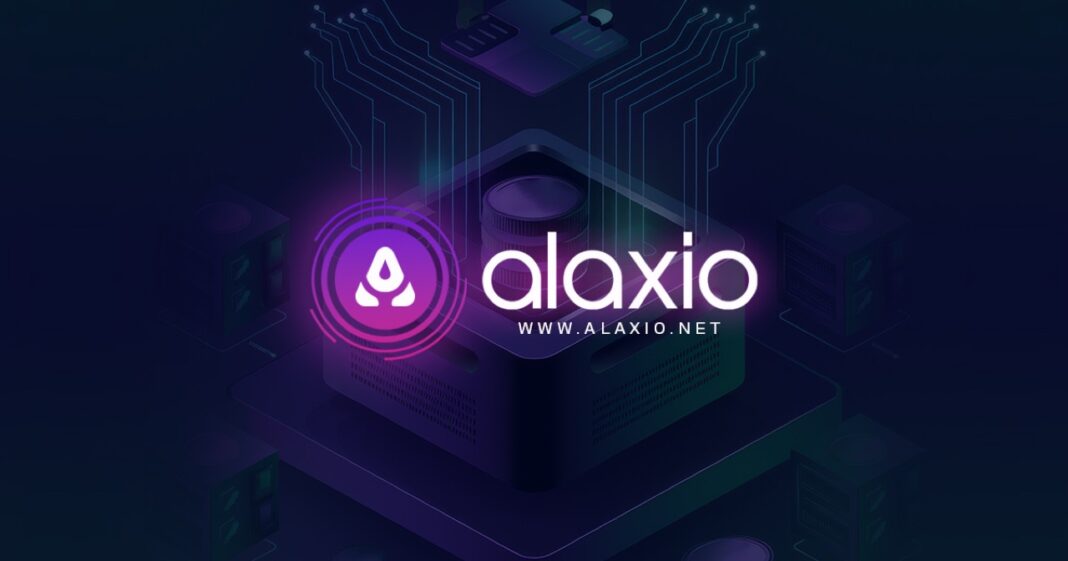For years, institutional investors sat on the sidelines of the cryptocurrency revolution, watching with cautious curiosity. Volatility, regulatory uncertainty, and a lack of infrastructure kept them at bay. But slowly, the tide has turned. Bitcoin ETFs, custody solutions, and regulatory clarity have opened the doors, and now a new frontier is emerging — decentralized finance.
Yet DeFi, with all its potential, remains largely the domain of retail investors and crypto-native enthusiasts. For institutions — banks, hedge funds, asset managers — DeFi’s promise often feels locked behind a wall of complexity and fragmentation.
What would it take for institutions to feel at home in the world of DeFi? More importantly, who is building the bridge between the old world of finance and the new?
In 2025, the name on many lips is Alaxio.
Quietly but methodically, Alaxio (ALX) is carving out a space not just in the crowded DeFi market, but in the broader financial world. And analysts are beginning to notice.
Institutional investors don’t move on hype; they move on fundamentals.
When they look at Alaxio, they aren’t just seeing another token launch or another DeFi app.
They’re seeing a platform with the hallmarks they value most: intelligent automation, robust infrastructure, multichain operability, and risk management built into its DNA.
Unlike many DeFi protocols that prioritize yield above all else, Alaxio has designed its platform around efficiency and security — two words that resonate deeply in institutional circles.
With AI-powered portfolio optimization tools, Alaxio offers something that traditional DeFi platforms can’t: a way to manage crypto assets with the same sophistication and nuance that institutions expect from their traditional portfolios.
Institutions are used to dealing with algorithmic trading, AI-driven insights, and risk-adjusted returns. Alaxio’s platform doesn’t ask them to compromise on these standards — it meets them where they are.
Another key factor attracting institutional attention is Alaxio’s commitment to multichain infrastructure.
In the early days of crypto, institutional access was largely confined to Bitcoin and Ethereum. Today’s landscape is far more complex. Funds and asset managers need to navigate a world of Layer-1s, Layer-2s, sidechains, and bridges.
Fragmentation isn’t just inconvenient — it’s a barrier to entry.
Alaxio’s vision is different.
Rather than forcing users to pick a chain and stay loyal, Alaxio embraces the multichain reality of 2025. Its platform is built to abstract away the complexities of blockchain navigation.
For institutions managing multi-million-dollar portfolios, the ability to move assets seamlessly between networks isn’t a luxury — it’s a necessity.
In many ways, Alaxio is offering institutions the DeFi equivalent of what prime brokerage services provide in traditional finance: centralized intelligence and decentralized execution.
Security, of course, remains paramount.
Institutions don’t just dip their toes into protocols with unproven track records.
They demand audits, penetration tests, compliance frameworks, and rigorous operational standards.
Alaxio understood this from the beginning.
Early in its development, Alaxio secured a thorough audit from Coinsult, a respected name in the blockchain security space.
But it didn’t stop there.
The platform’s architecture was designed to minimize points of failure, utilizing decentralized oracles, smart contract fail-safes, and regular stress-testing to ensure reliability.
For institutions, this commitment to security translates into trust — and trust is the bedrock of adoption.
Another reason analysts believe Alaxio is turning institutional heads is its nuanced approach to regulation.
DeFi’s wild west days are over. Regulators worldwide are stepping in with frameworks designed to protect investors without stifling innovation. Institutions are no strangers to compliance — it’s part of their daily existence.
What they need are platforms that can operate within regulatory bounds while still offering the efficiencies and opportunities DeFi provides.
Alaxio’s roadmap includes features designed with compliance in mind.
KYC/AML support for certain modules, transparent governance processes, and partnerships with custodial services ensure that institutional players can interact with Alaxio without jeopardizing their operational mandates.
For institutions accustomed to dealing with multiple regulatory regimes across borders, this flexibility is not just appealing — it’s critical.
But perhaps the most compelling reason Alaxio is capturing institutional interest is simpler than technology or regulation.
It’s timing.
In 2025, the macro landscape is changing. Interest rates are fluctuating. Traditional markets are showing signs of stress.
Investors are once again hunting for yield — but they are smarter and more cautious than they were in 2020’s DeFi boom.
They want yield, but they also want intelligence, security, and efficiency.
Alaxio, with its AI-enhanced DeFi tools, is positioning itself at precisely this intersection.
As the Beta platform gears up for launch, complete with staking, cross-chain liquidity optimization, and AI portfolio management, institutions are already starting to line up. They see in Alaxio a chance not just to access DeFi, but to access it intelligently — with the tools and assurances they need to operate at scale.
Of course, nothing in crypto is guaranteed.
The markets are volatile. Narratives shift. New contenders emerge.
But if history has taught us anything, it’s that platforms that address real needs — platforms that make the complex simple and the risky manageable — are the ones that endure.
Solana, for all its success, grew by solving a core problem for its time: transaction speed.
Alaxio is solving the problems of 2025: fragmentation, complexity, and the need for smarter, safer investing.
As the institutional floodgates continue to open, don’t be surprised if Alaxio isn’t just part of the conversation — but leading it.
🔗 Explore Alaxio and the ALX token: https://alaxio.net









